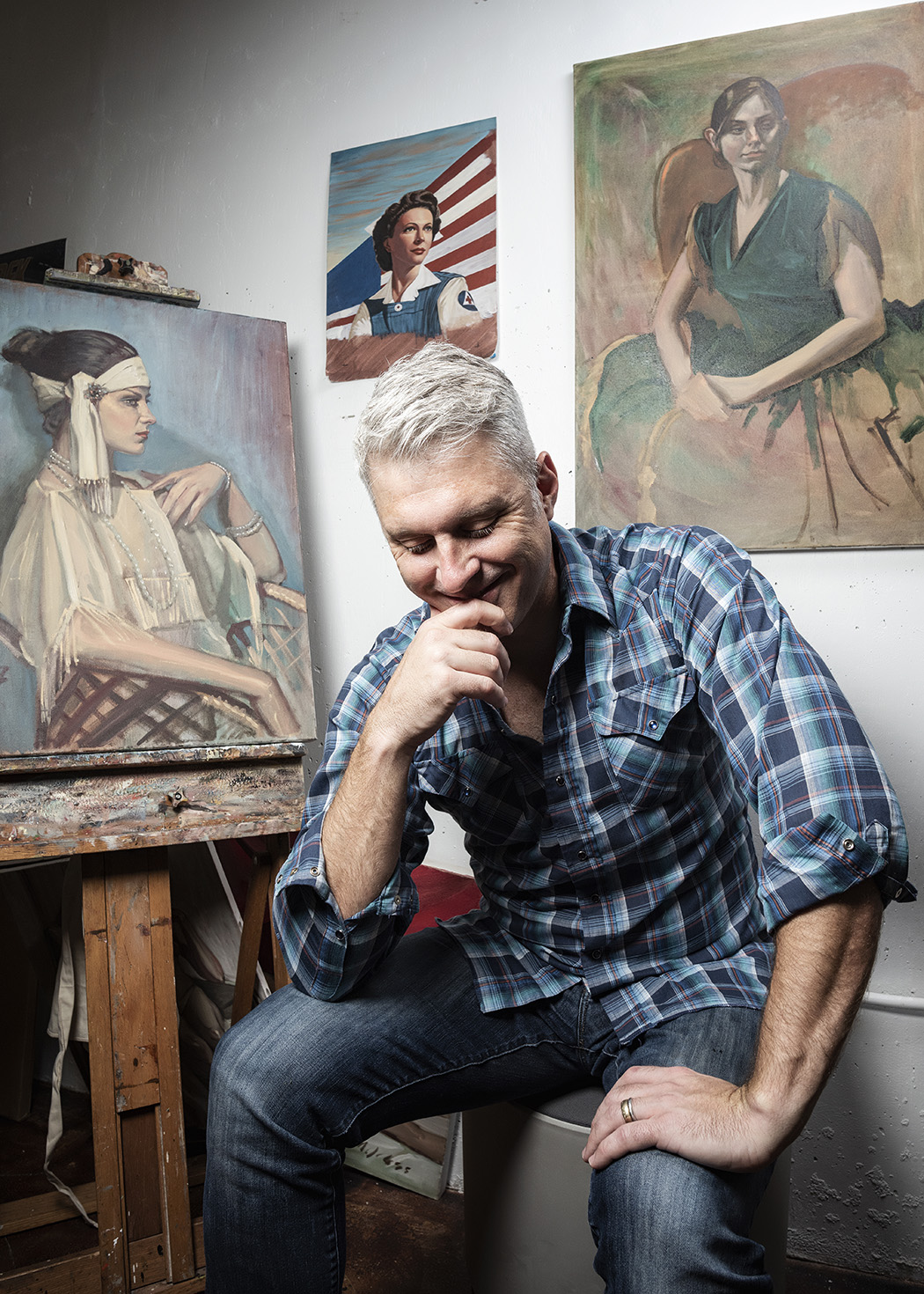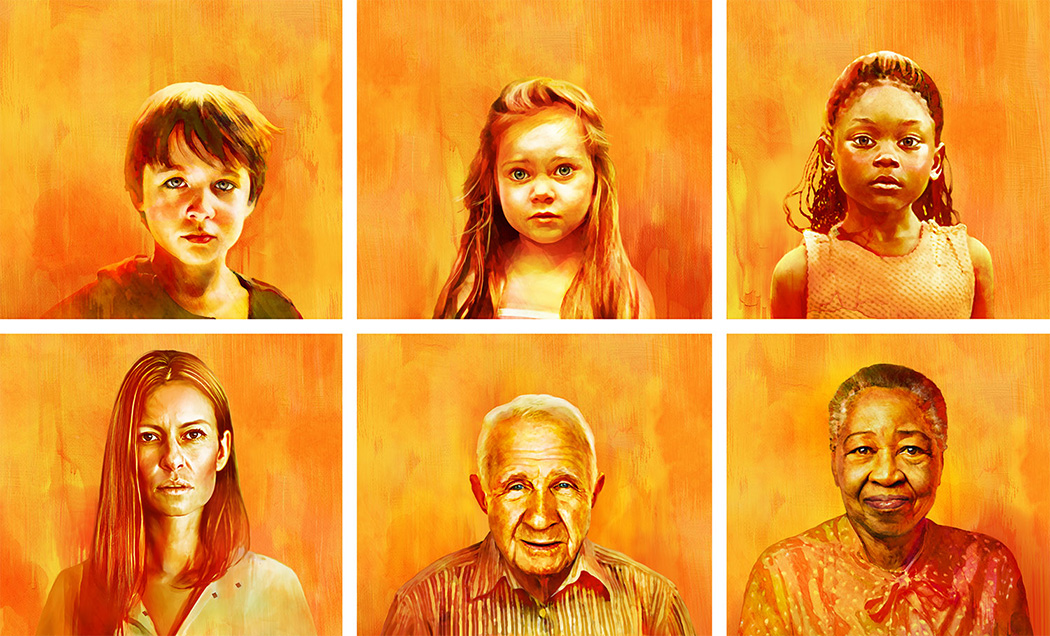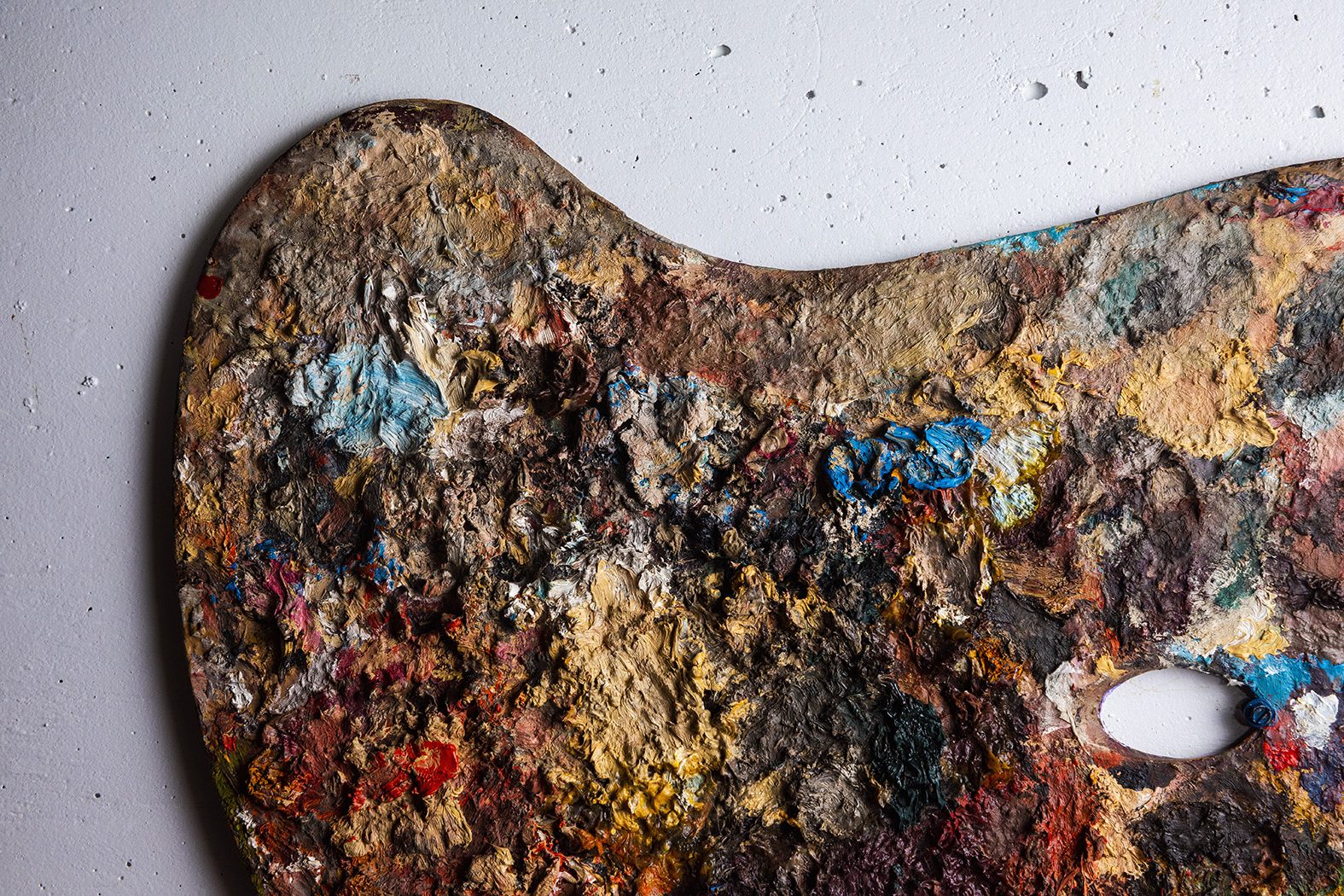
Photography by Danny Fulgencio
From the Hasbro board game on the Target shelf to the D Magazine cover delivered to your door, you’ve probably seen Mark Ross’ art. For decades, the Lakewood neighbor has worked as a prolific illustrator, navigating his way through a rapidly changing industry to partner with the top local and national brands.
“I do a lot of things, and that’s been my curse,” Ross says. “You’re not going to see a piece and say, ‘That’s Mark Ross,’ because I’ve never really settled in one area. I like to do lots of things.”
Ross started his artistic career as an oil painter at age 7. He still paints every Thursday, and his studio, in a purple house on Goliad Avenue, has piles of canvases heaped in doorways or stacked on shelves. Yet when Ross left for college at Syracuse, he decided to major in illustration.
“It was like, ‘Maybe I’ll study art, but maybe I’ll study something where I’ll actually find a job,’” Ross says.
His painting skills proved useful, though. Early computers were still years away from producing high-quality digital art, so he trained in the traditional methods of watercolor, oil and colored pencil. He used those skills to land his first steady job at Fossil, when the accessories giant was still a small company operating out of a storage building in Richardson.
Ross worked on several product ads, including a special edition “Star Trek” poster that the company used to market its collectible watch series at stores across the country. He spent months signing his name to 2,500 prints that featured Capt. Kirk, Spock and the U.S.S. Enterprise on a starry background.
After three years, Ross left Fossil and went to work at a digital studio with renowned illustrator Don Ivan Punchatz. None of the artists knew much about digital art programs, but they experimented and shared what they learned. It wasn’t long before they replaced antiquated Quantel Paintboxes with powerful Apple computers capable of editing large images.
Ross’ work today is a combination of traditional art methods, photography, photo editing and computer-generated imagery. Part of the creative process is deciding how to use those tools to execute projects for clients.
One of his favorite assignments required photographing the inside of an Acura, then using Photoshop to create a composite image from multiple pictures. The final poster showed layers of the car peeled back on a dissecting tray to reveal the engine and interior.
“I see my job as taking an idea and polishing it up to make it extra special,” Ross says. “Illustration is image-making to sell a product or creating a stunning image to catch the viewer’s eye. It’s making a product better than you could photograph. It’s about storytelling for print, social media and mass markets.”

A series of painted portraits for North Texas Food Bank’s holiday giving campaign.
Throughout his career, Ross has worked with clients like Southwest Airlines, McDonald’s and Hasbro. The board game company hired him in 2000 to illustrate the box, game board and playing cards for Trivial Pursuit. The edition that landed on shelves for the next five years was one of Ross’ creations, which showed eclectic objects on a blue background that looked like ripped cardboard.
Ross has worked strictly as a freelance artist since 2003, a few years after the digital art studio closed. He used those contacts to grow his clientele, but it hasn’t always been easy.
“I’ve done things that are cool and exciting, but I don’t get overly excited about it,” Ross says. “You can’t rest on stuff you’ve  done in the past. You’ve got to keep working.”
done in the past. You’ve got to keep working.”
Today, one of his most steady gigs is illustrating covers for Scientific American. It’s a special client for Ross, who grew up reading the magazine. Some of his family members still subscribe, and they call him each month to praise his work.
“It’s neat when your relatives can appreciate what you do,” Ross says. “That’s one of the neat things about being an illustrator — you get to see your art out in the world, and it’s seen by thousands of people.”

Photography by Danny Fulgencio





